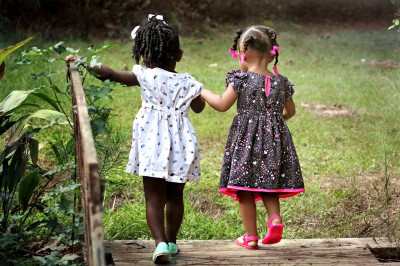How to teach kids perspective taking skills and step into others’ shoes!
I was visiting a Kansas school when I happened upon two boys engaged in serious conversation with their principal. The eleven-year-olds were in trouble (again) for another “heated” debate over their shared locker and had escalated to a physical confrontation. Each accused the other of “messing with my stuff,” but the principal was using a different discipline ploy. She handed each a “Think Sheet,” which required the boys to answer from the other’s perspective. Questions on her “Think Sheet” included:
“What happened?” “What would the other person say happened?” “How do you feel about what happened?” “How do you think the other person feels or needs?” “What would you like to tell the other person?” “What is the best way to solve this problem so both of you are satisfied?”
Listening to their reactions was priceless:
“I’m not him, so how do I know how he feels?”
“This is too hard,” said the other. “I can’t figure out what he wants.”
And that was their problem: neither thought about how the other felt because each was seeing only “their side.”
The principal’s perspective-taking strategy was a brilliant way to help the boys figure out the feelings, thoughts, and needs of someone besides themselves. And in today’s selfie-absorbed world, that strategy is crucial. After all, the world our children live in is “WE” not “ME” and self-absorption kills empathy.
Perspective taking is the ability to understand another person’s thoughts, feelings, wants, and needs. I like to call this essential habit the “gateway to empathy,” because it helps us step into another’s shoes, feel what another human being is feeling, and understand the world from his or her point of view.
Mastering perspective taking is an important part of instilling a deep, caring connection with others. It’s also a habit that students need for every part of life—from handling playground disputes today to mastering boardroom debates tomorrow.
When children can grasp another’s perspective, they are more likely to be empathetic, anticipate the other’s behavior or thinking, handle conflicts peacefully, be less judgmental, value differences, speak up for those who are victimized, and act in ways that are more helpful, comforting, and supportive of others. And so the list of advantages goes on. Studies also show that kids who understand others’ points of view acquire what I call in UnSelfie, “The Empathy Advantage”: they are better adjusted, more popular, even have healthier peer relationships and have a huge employment edge in today’s global world.
And there’s good news: perspective taking can be taught to students from preschool to high school (as well as beyond). It’s also clear that the best way to teach kids about perspective taking is finding meaningful ways for them to step out of their own shoes and experience the “other” side.
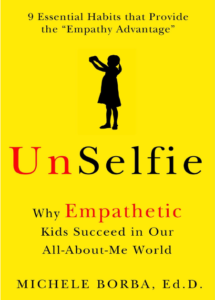 I’ve spent the last few years touring the world to find best practices to nurture children’s empathy. The “Think Sheet” was just one of many educator strategies to help their students understand another’s thoughts, needs and feelings. But I found dozens more in my classrooms visits and wrote them in my book, UnSelfie: Why Empathetic Kids Succeed in Our All-About-Me World. My hope was that it can be used as a practical, research-based guide to parents, leaders and educators to expand children’s empathy capacities. Each of the nine chapters address a crucial habit that is crucial to activating children’s empathy. In all, over 300 practical, proven ideas to build children’s empathy muscles are provided in the book.
I’ve spent the last few years touring the world to find best practices to nurture children’s empathy. The “Think Sheet” was just one of many educator strategies to help their students understand another’s thoughts, needs and feelings. But I found dozens more in my classrooms visits and wrote them in my book, UnSelfie: Why Empathetic Kids Succeed in Our All-About-Me World. My hope was that it can be used as a practical, research-based guide to parents, leaders and educators to expand children’s empathy capacities. Each of the nine chapters address a crucial habit that is crucial to activating children’s empathy. In all, over 300 practical, proven ideas to build children’s empathy muscles are provided in the book.
Here are seven ways to weave perspective-building into your daily lessons from UnSelfie. But parents can easily adapt these ideas at home.
Assign “feeling and thought” reading logs.
A Washington middle school teacher assigned her students to read The Diary of a Young Girl but varied the usual lesson by creating reading logs. As they read, students were to note in their log page numbers, a one-line description of what was happening, and how they would think or feel if they were Anne. The simple strategy helped students step into a tragic time of history and grasp-at least a little deeper-the impact of the Holocaust.
Try shoes, hats, and scarves.
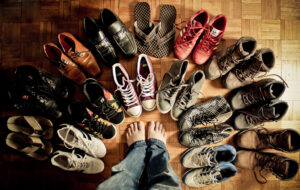 Laurie Coon, a Dublin, Ohio, counselor, teaches an empathy activity with shoeboxes filled with ice skates, cross-trainers, slippers, army boots, stilettos, and so on. Each student opens a shoebox, steps into the shoes, and describes who might wear them. You could also use the props for story prompts or creative play. Or just set up a box filled with different hats and scarves for children to dress up and pretend to step into the world of another.
Laurie Coon, a Dublin, Ohio, counselor, teaches an empathy activity with shoeboxes filled with ice skates, cross-trainers, slippers, army boots, stilettos, and so on. Each student opens a shoebox, steps into the shoes, and describes who might wear them. You could also use the props for story prompts or creative play. Or just set up a box filled with different hats and scarves for children to dress up and pretend to step into the world of another.
Hold a paper-shoe test.
An Oregon English teacher helps her ninth graders understand characters’ perspectives by using six paper shoe cutouts. Her test for Shakespeare’s Romeo and Juliet is for students to take turns stepping onto each cutout and describing that character’s views and feelings (Romeo, Juliet, Lady Capulet, Tybalt, Mercutio, Friar Laurence). The teacher told me that the exercise not only enhances her students’ perspective for each character, but it is also their favorite test.
Offer real shoes!
A variation to the high school teacher’s paper shoe test is to use real shoes with younger students. Just bring in pairs of over-size shoes, put each main character’s name (like Charlotte, Wilbur, Fern and Templeton) on a sticky note, and stick them on each shoe toe.
Students can take turns jumping into each shoe as they describe how they feel and what need based on what they understand that character.
Use emotionally-charged books.
 Books, especially literary fiction, are one of the best ways to help transport us to other worlds. Here are a few student favorites that I list in UnSelfie that boost perspective taking.
Books, especially literary fiction, are one of the best ways to help transport us to other worlds. Here are a few student favorites that I list in UnSelfie that boost perspective taking.
Younger kids: The True Story of the Three Little Pigs, by Jon Scieszka; The Bedspread, by Sylvia Fair; Through Grandpa’s Eyes, by Patricia MacLachlan. Middle level students: The Pain and the Great One, by Judy Blume; Wonder, by R.J. Palacio, The Boy in the Striped Pajamas, by John Boyle. Teens: To Kill a Mockingbird, by Harper Lee, The Curious Incident of the Dog in the Night-Time, by Mark Haddon, Black Like Me, by John Howard Griffin.
Perspective-stretching questions might include: “What’s the perspective of [character]? Whose view is missing? How would you feel? What would you do differently?”
Switch the pronoun.
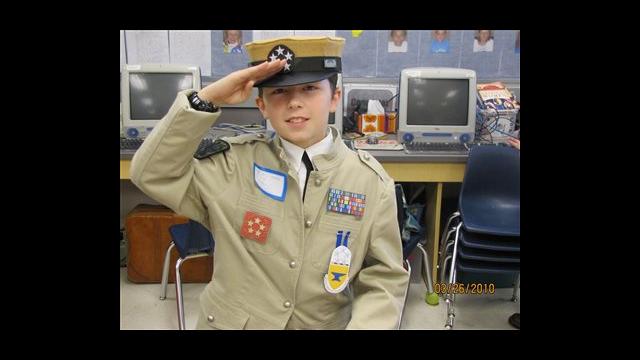
Sally Songy, a Palm Springs second grade teacher, holds a yearly “Hero Week.” Each student identifies someone they admire in history, and read biographies or watch films about the individual. Next, each writes a brief paper about the person’s life and why they chose the person but it must be written from first person. (“My name is Dwight D. Eisenhower. I was born…) which helps stretch perspective taking. Finally, each child steps into the shoes of their hero by creating a costume from boxes, paper bags, material, construction paper and wears it as they read their paper to the class on “Hero Day.” Songy says that requiring the simple pronoun switch from third to first person, and then dressing up as their hero helps stretch her students’ perspective-taking abilities. And research supports her.
Hold a 24-hour hunger strike.
How do you help students step in other’s shoes when they have never experienced strife? One teacher in Ontario, Canada found a way by giving his senior class an unusual assignment: “Identify a disadvantage you’ve never experienced like living in a homeless shelter, being blind, or motor impaired. Now find a way to understand what it feels like to be that person and then write up your experience.” Some students decided to do a twenty-four-hour hunger strike (with parental blessings) to understand famine. Not only did they gain a new perspective, but the activity also activated their empathy. Many now volunteer to feed the hungry. And my research found that students are more likely to empathize with those “like them.” That’s why we need to help our students step our of their comfort zone and expose them to those who are “different” by culture, race, gender, age, beliefs and experiences. The Ontario teacher had found a way to help his students step into the shoes of people who are without food. The experience changed their lives.
There are numerous ways to vary the activity and help your students step into the shoes of someone who is challenged. For instance:
Blind: Wear a blindfold and try to move around the classroom; Mute: Sing but cover your mouth; Deaf: Put in earplugs and headphones and try listening; Learning challenged: Attempt writing backward or while looking in a mirror. Physically challenged: Try navigating your surroundings from a wheelchair.
Then always ask students to reflect on their experience.
Understanding what another thinks, feels, wants, and needs takes practice and ability, and sometimes ingenuity. So look for those ways to stretch students’ perspective-taking abilities and weave them into your lessons. Doing so will help us all graduate students with strong minds and caring hearts who think WE, not ME.
How will you find ways to help your students step in the shoes of others? Please share your ideas so we can help our children think “WE,” not “ME.”
Best!
Michele
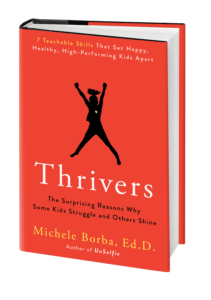 My new book, Thrivers: The Surprising Reasons Why Some Kids Struggle and Others Shine is in print March 2, 2021! I’ve spent the last five years researching and writing this book as well as literally flying around the world to find the best ways we can raise resilient children. My goal is to create a conversation that makes us rethink or view of success as exclusively grades, rank and score and includes character strengths that can-and must-be taught.! It’s filled with common-sense solutions based on the latest science to help us raise kids with strong hearts, minds and will. It’s time to include “resilience” in our parenting and teaching!
My new book, Thrivers: The Surprising Reasons Why Some Kids Struggle and Others Shine is in print March 2, 2021! I’ve spent the last five years researching and writing this book as well as literally flying around the world to find the best ways we can raise resilient children. My goal is to create a conversation that makes us rethink or view of success as exclusively grades, rank and score and includes character strengths that can-and must-be taught.! It’s filled with common-sense solutions based on the latest science to help us raise kids with strong hearts, minds and will. It’s time to include “resilience” in our parenting and teaching!


